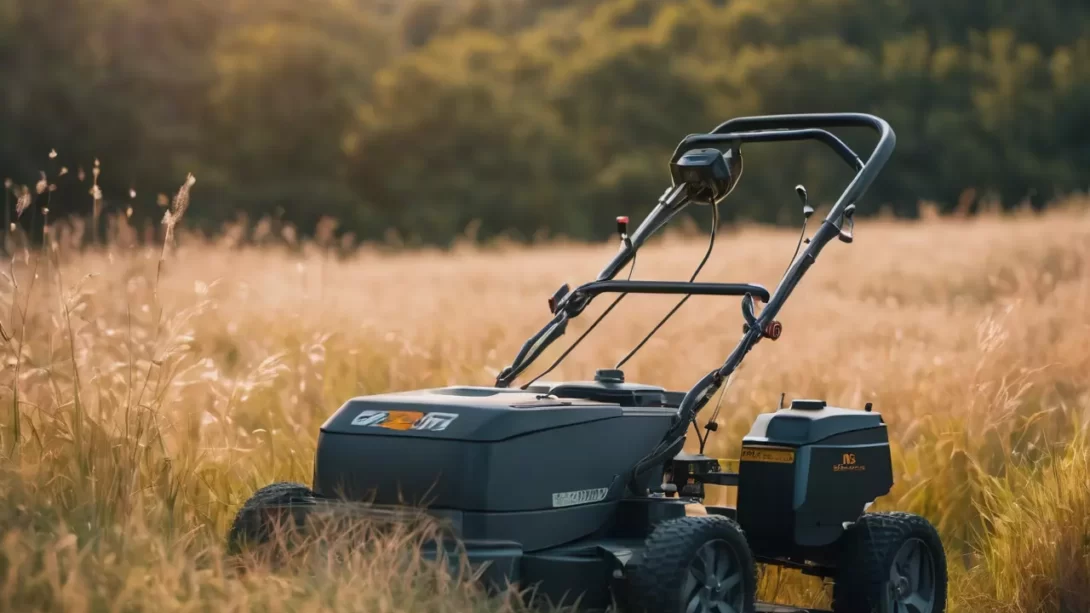Cutting tall grass is a challenge that can confront any gardener, especially when a mower is not an option. Whether due to environmental concerns, equipment availability, or personal preference, many gardeners seek alternative methods for managing their lawns. This article explores various techniques and tools for effectively cutting tall grass without relying on a conventional mower. We’ll delve into the understanding of tall grass, the selection of appropriate tools, and the techniques for a well-maintained lawn, ensuring your garden remains both healthy and aesthetically pleasing.
Tall Grass
Tall grass in a garden isn’t just a visual issue; it can lead to several gardening challenges. When grass grows too tall, it can harbor pests and create a damp, disease-prone environment. Understanding the nature of tall grass is crucial. It tends to be tougher and more fibrous, making it difficult to cut cleanly. The height of the grass can also unevenly shade the soil, leading to patchy growth. Additionally, tall grass can quickly go to seed, potentially leading to more unwanted growth. Timely cutting is essential in managing these issues and maintaining the health and appearance of your lawn.
Tools and Equipment
The right tools are critical for effectively cutting tall grass without a mower. Here are some key options:
- Scythes: Traditional and efficient, scythes are excellent for cutting large areas of tall grass. They require a specific technique but can be very effective once mastered.
- String Trimmers: Also known as weed eaters, string trimmers are great for tackling tall grass in smaller or more difficult-to-reach areas. They are less labor-intensive than scythes but still require some skill to use effectively.
- Manual Reel Mowers: Best for slightly overgrown grass, manual reel mowers provide a more environmentally friendly option compared to motorized mowers. They are quiet and low maintenance.
- Shears: For precision work and smaller patches, garden shears can be useful. They offer control and are ideal for trimming around edges and obstacles.
Selecting the right tool depends on the size of your lawn, the height and type of grass, and your personal physical capability. Each tool requires some practice to use efficiently and safely.
Preparing the Area
Before cutting tall grass, it’s important to prepare the area to ensure efficiency and safety. Start by removing any large debris, rocks, and sticks that could hinder the cutting process or damage your tools. Marking areas with string or flags can help in planning your cutting strategy, especially in larger lawns. This preparation helps in dividing the work into manageable sections. Safety is paramount; wear appropriate clothing, including long pants, sturdy shoes, and gloves. If using powered tools like string trimmers, consider wearing eye and ear protection. Ensure you have a clear plan of the area to be cut to avoid missing patches and to work efficiently.
Cutting Techniques
Each tool requires specific techniques for effective use:
- Using a Scythe: Stand with your feet shoulder-width apart, holding the scythe comfortably. Swing with your whole body, not just your arms, keeping the blade close to the ground. It’s a rhythmic, sweeping motion that cuts the grass at its base.
- String Trimmer: Hold the trimmer steadily, sweeping it back and forth in front of you. Keep the cutting head parallel to the ground for an even cut. Work in small sections, moving forward as you clear each area.
- Manual Reel Mowers: Push the mower forward steadily; the blades spin and cut the grass as you move. It’s best for grass that’s not too tall, as very tall grass can jam the blades.
- Shears: Use hand shears for precision work around edges and obstacles. Cut close to the ground, and use a steady hand to maintain a straight edge.
Remember to take regular breaks, especially when using manual tools, to avoid fatigue.
Managing Cut Grass
Once the grass is cut, deciding what to do with the clippings is important. You have several options:
- Composting: Grass clippings can be added to a compost pile, providing valuable nitrogen. Ensure your compost has a good balance of green and brown materials.
- Mulching: Some of the grass clippings can be left on the lawn to decompose naturally. This acts as a mulch, providing nutrients back to the soil. However, too much can smother the grass, so only a thin layer should be left.
- Disposal: If the grass clippings are too much to compost or mulch, they can be collected and disposed of according to local yard waste guidelines.
Managing the cut grass effectively not only keeps your lawn tidy but also contributes to its health and the health of your garden ecosystem.
Aftercare and Maintenance
Post-cutting care is crucial for maintaining a healthy lawn. Water your grass regularly, especially after cutting, to help it recover and grow evenly. Fertilizing appropriately can also promote healthy growth. Regular trimming, even when the grass isn’t overly tall, helps prevent future overgrowth and maintains the lawn’s appearance. Tool maintenance is equally important. Clean your tools after each use to prevent rust and damage. Sharpening blades, especially for manual tools like shears and scythes, ensures efficient cutting during each use. Regular maintenance reduces the physical effort required and prolongs the life of your tools.
Alternative Solutions
In some cases, traditional grass cutting may not be the most sustainable or practical option. Consider eco-friendly alternatives like rewilding certain areas of your garden. This involves allowing native plants and grasses to grow naturally, creating a habitat for wildlife. Another option is planting ground covers, which are low-growing plants that require minimal maintenance and can reduce the need for regular grass cutting. These alternatives not only reduce labor and resource use but also contribute to biodiversity and can create unique and attractive landscapes.
Conclusion
Cutting tall grass without a mower is a manageable task with the right tools and techniques. It requires a bit more effort and planning, but the results can be just as satisfactory. Regular maintenance and care of both your lawn and tools will make the process easier over time. Consider alternative lawn solutions for an eco-friendlier approach. Whichever method you choose, the key to a beautiful and healthy lawn lies in consistent care and a willingness to adapt your techniques to the needs of your garden.



